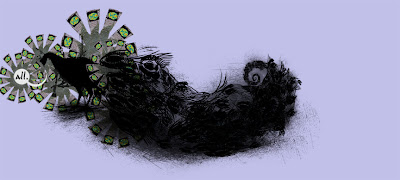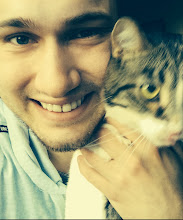
Heres the starting of my newest image, been working hardcore....but....I feel like I got into a state of hyperfocus and overdid the tail to this lovely peacock tenfold. Im posting this so I have a record of it, I've already started on the new tail with a new fade into space-
As Im going through this process, Im choosing my focal point, my animal silhouette based on how much identification one can draw from just a silhouette and a one or two details. Im seeing more and more through observation that we only need a few hints to tell us exactly what it is we are looking at.
There are only a few descriptive areas needed to define in our complex human minds;
Kingdom: Animalia
Phylum: Chordata
Class: Aves
Order: Galliformes
Family: Phasianidae
Genus: Pavo
All Im leaving out is the individual species.
Of which, only two major types exist for the peacock-
-Pavo cristatus
-Pavo muticus
One of the thoughts that really got me started on this was an old letter originally from Graham Rawlinson, a specialist in child development and educational psychology; in the letter he related an experience from his Ph.D. work at Nottingham University, a study which showed that randomizing letters in the middle of words had little or no effect on the ability of skilled readers to understand the text. Im sure you've all seen the email with offshoots of this as it has been passed around for years now, but in case you haven't heres an example:
"Aoccdrnig to a rscheearch at Cmabrigde Uinervtisy, it deosn't mttaer in waht oredr the ltteers in a wrod are, the olny iprmoatnt tihng is taht the frist and lsat ltteers be at the rghit pclae. The rset can be a toatl mses and you can sitll raed it wouthit porbelm. Tihs is bcuseae the huamn mnid deos not raed ervey lteter by istlef, but the wrod as a wlohe."
Chances are you also understand it. It purports that the order of the letters inside a given word doesn't matter, as long as the first and last letters of each word are in the right place.
His words were in part misrepresented through this forward, in response to its popularity he stated, "Clearly, the first and last letters are not the only thing that you use when reading text, If this were the case, how would you tell the difference between pairs of words like 'salt' and 'slat'."
Also, one permutation could result in many different words, and, while you can take into consideration the sentence's context, you would still be unable to be sure about the author's true intention of word choice. For example, the transposed letters of 'ponits' could spell out any of five different words – 'pitons', 'points', 'pintos', 'potins', and 'pinots.' In the forward, the sentences are simple and, given the unchanged words, one can deduce their meaning easily. There is some truth to the e-mail in that people can read sentences in which the letters are jumbled.
There is always a cost involved in reading such text in comparison to normal text, speed for example, but the interesting part is how easily it can be read....
Generalizing, with very few hints, like in the words of this partially conclusive word jumble study, is playing a lot into this new series.
Also notable! Two or three letters don't change at all, making them totally understandable.... Hence my use of three letter words from the mouths of the silhouettes thusfar. Not only that but I also am interested in how much meaning and content one word well-chosen can add to a piece-
I'm very happy with the series so far and have lots of good thought for pushing forward. I'm excited for continuing this trail :]
Interesting much! And thats where we are right now-
:D
Have a great afternoon!
And of cosure, remmeber to aviod excesisve drniking.





























